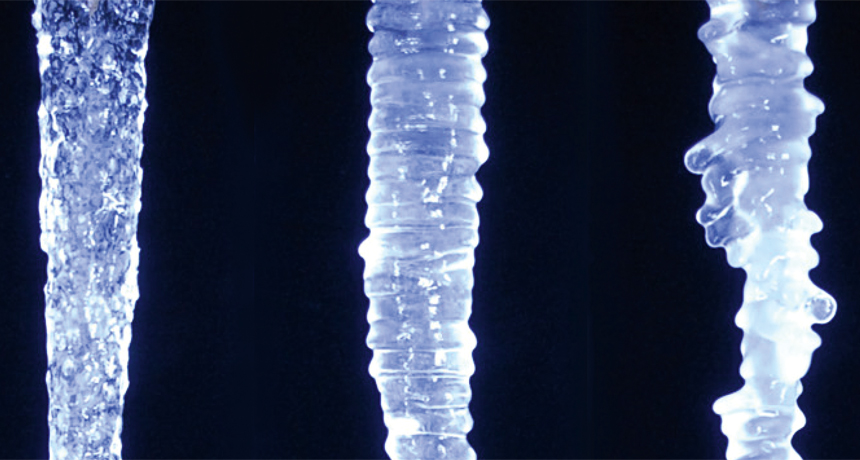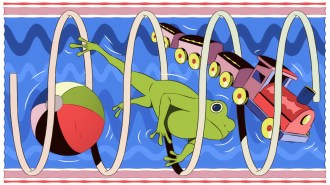Ripple effect

SALTY SHAPES Frozen alone, distilled water produced an unrippled, carrot-shaped icicle (left). When scientists added a pinch of sodium chloride, or table salt, to the freezing water, regularly spaced ripples formed (center). Adding more salt made the ripples become wildly irregular (right).
A. Szu-Han Chen and S.W. Morris/New J. of Physics 2013







